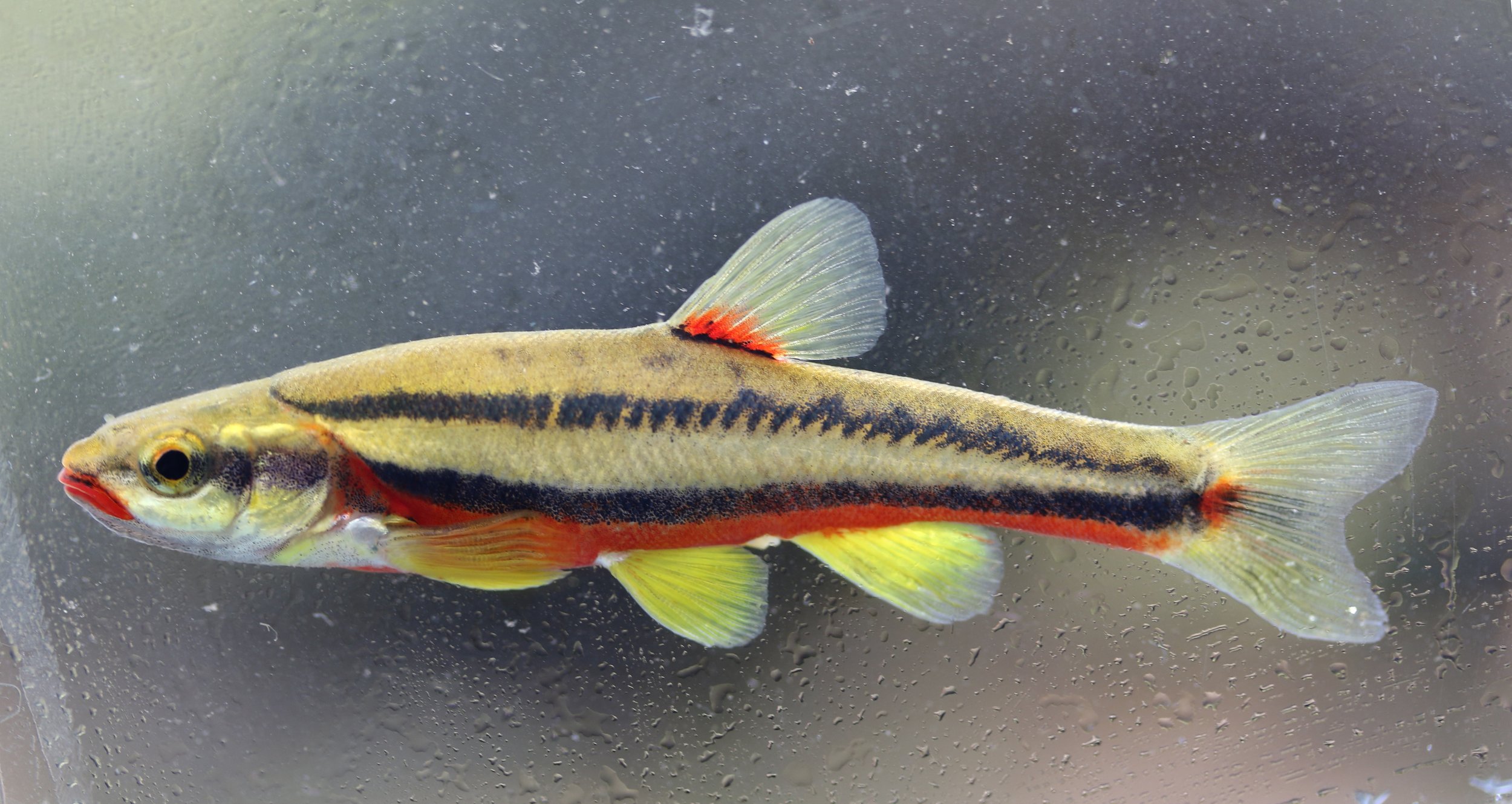This summer, researchers from the River Basin Center assisted the Tennessee Aquarium Conservation Institute (TNACI) in rescuing one of the last populations of the Laurel Dace, an endangered minnow species, from a drying stream in Tennessee. The rescue, conducted in collaboration with the US Fish and Wildlife Service, has since attracted media attention from multiple Chattanooga news outlets as well as Pattrn, an affiliate of The Weather Channel that covers climate change and conservation.
The Laurel Dace (Chrosomus saylori) is originally known from six streams in Bledsoe and Rhea Counties in Tennessee. Its range has since been significantly reduced, and the species is now found in only two streams. The remaining wild Laurel Dace face a number of challenges, from agricultural siltation disrupting their breeding grounds, to invasive predators diminishing the population.
This year Tennessee, like all of the South, has faced one of the hottest summers on record, with the heat affecting quality of life, agricultural production, and water levels. With nearly 60% of the state experiencing drought, researchers expected rough conditions in the Dace’s streams, but the situation proved to be more urgent than they imagined.
RBC affiliate and freshwater ecologist Christian Swartzbaugh discovered the Laurel Dace’s plight when he surveyed a nearby stream that was largely inhabited by Tennessee Dace, a morphologically similar species.
“The Tennessee Dace all died because they were so stressed,” Swartzbaugh said. “The water was so low that their dorsums were out of the water. So we went to a few other locations, and this one stream was horrible. It was almost completely dry.”
The remaining Laurel Dace had been reduced to surviving in isolated, stagnant pools that had formed in deeper sections of what had once been the stream. Swartzbaugh reported the situation to colleagues at TNACI, who (in consultation with FWS), made the decision to rescue what they could of the Laurel Dace.
“They could’ve gone extinct this summer from lack of rain,” Swartzbaugh said.
The researchers collected over 100 individuals and transported them to the Tennessee Aquarium, where they are being held until stream conditions improve enough to reintroduce them into the wild.

